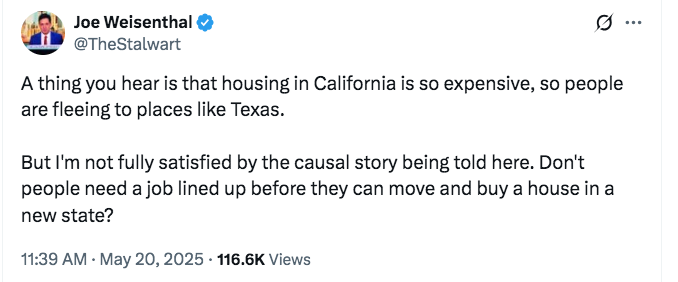Joe Weisenthal on jobs and migration

Interstate migration is a complex phenomenon that is influenced by a variety of factors. A tweet by Joe Weisenthal sparked a discussion on what drives people to move from one state to another.
The question of whether job availability drives migration or if migration leads to job availability is a classic chicken-and-egg scenario. It highlights the fallacy of composition, where what holds true for individuals may not necessarily apply to the group as a whole.
While job opportunities certainly play a role in individual decisions to move, the broader trend of migration is also influenced by factors such as housing costs, taxes, and business regulations. States like Texas, known for their business-friendly environment, are attracting both workers and employers due to lower taxes and housing costs.
Employers often follow the labor pool when deciding where to locate their businesses. By setting up shop in states with a large influx of skilled workers, they can benefit from lower wages and a competitive market. This creates a cycle where workers move to areas with job opportunities, while employers are drawn to locations with a ready workforce.
It’s a complex equilibrium phenomenon where both workers and employers play a role in shaping migration patterns. Just like how shoppers attract car dealers to a specific area, and in turn, dealers draw in more customers, the relationship between job seekers and employers is symbiotic.
Understanding the interplay between individual decisions and broader trends is crucial in analyzing interstate migration patterns. It’s not just about job availability or housing costs but a combination of various factors that drive people to relocate in search of better opportunities.





